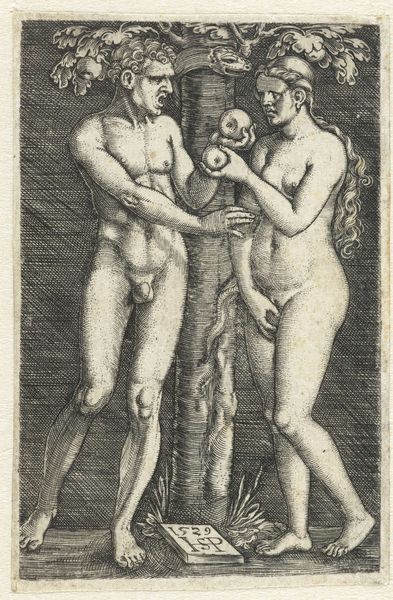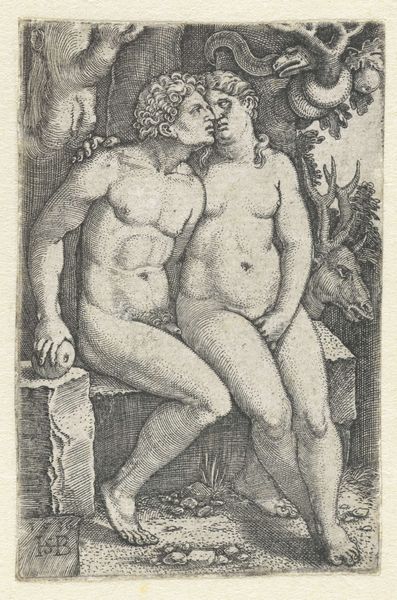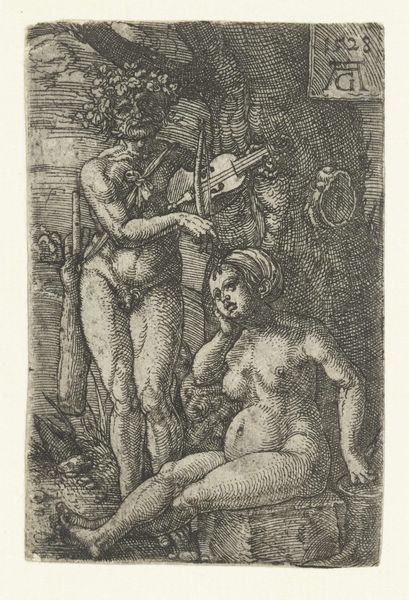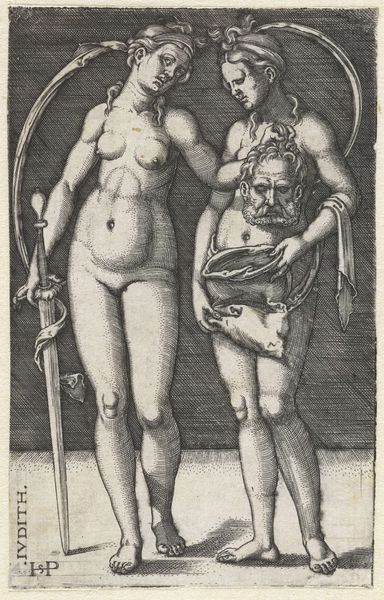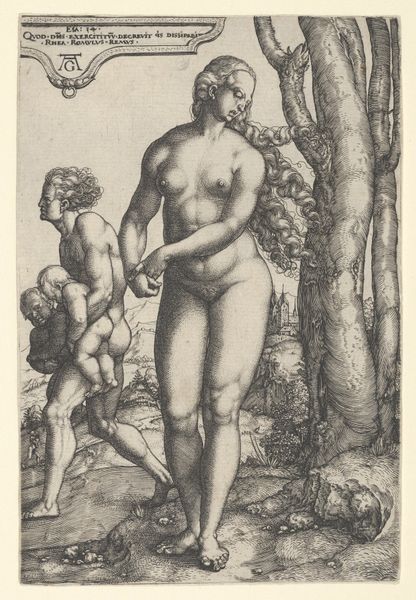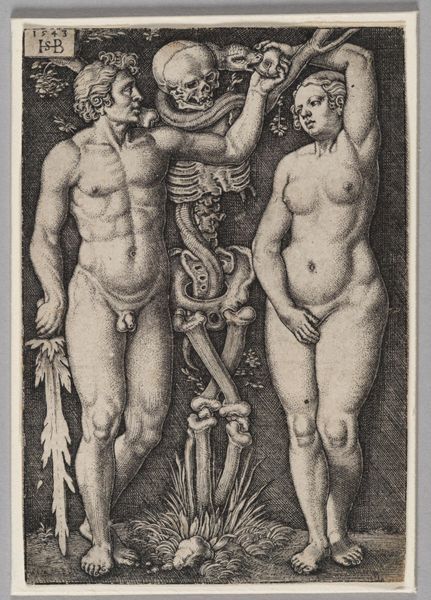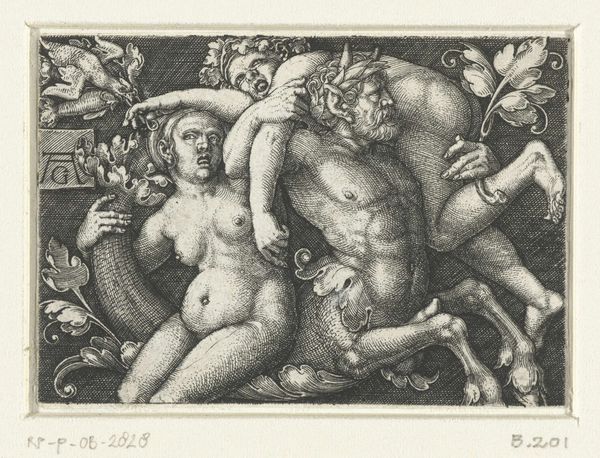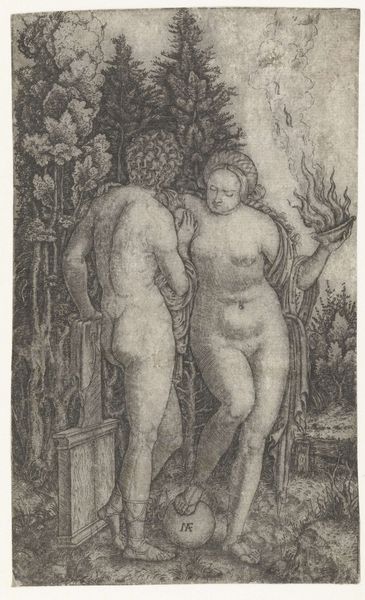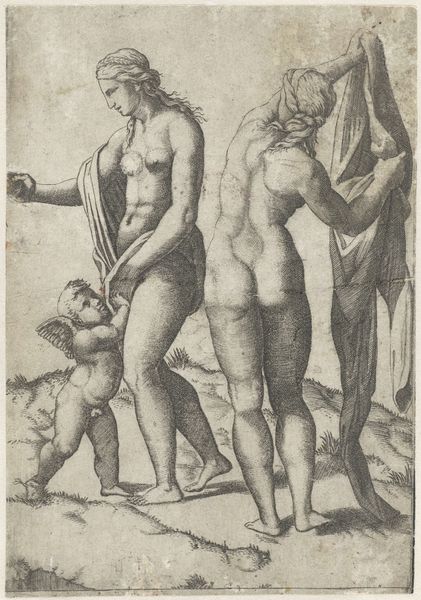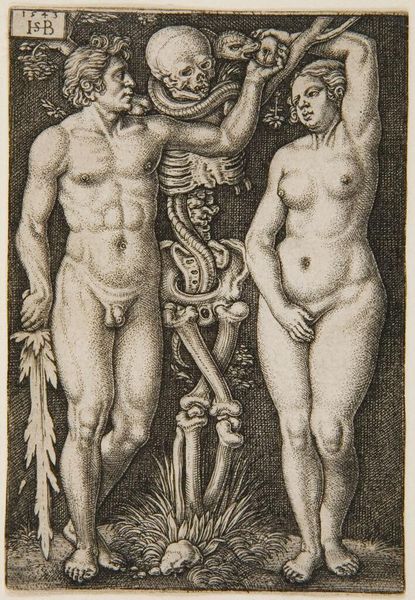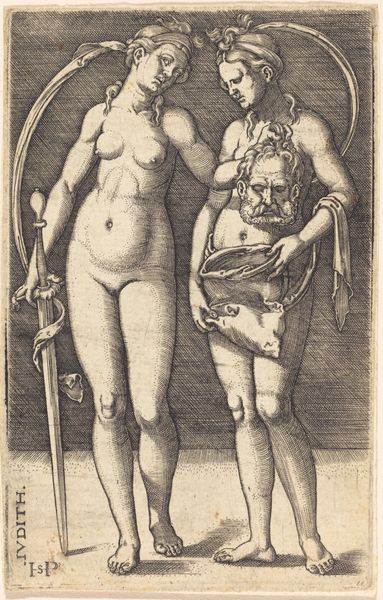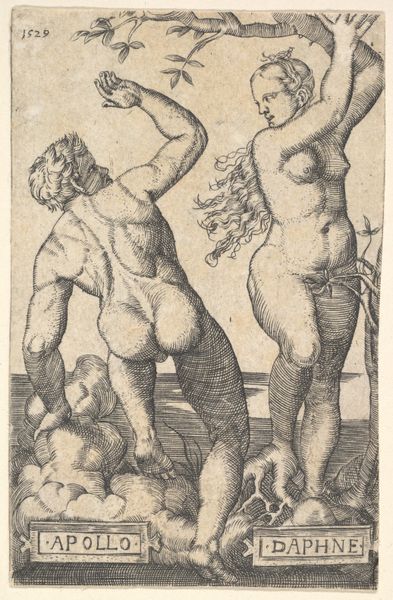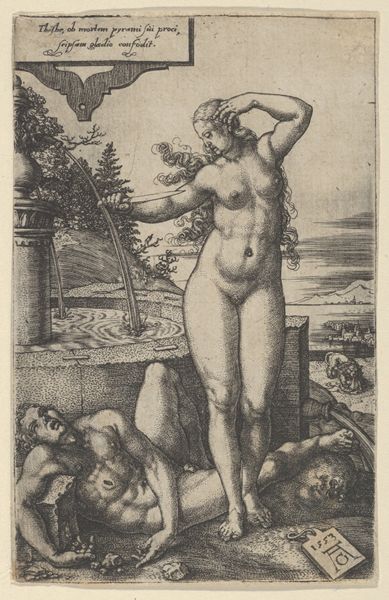
print, engraving
#
pencil drawn
#
allegory
# print
#
old engraving style
#
figuration
#
11_renaissance
#
momento-mori
#
line
#
northern-renaissance
#
nude
#
engraving
Dimensions: height 77 mm, width 55 mm
Copyright: Rijks Museum: Open Domain
Sebald Beham created this tiny woodcut, "Death and Three Standing Nude Women," sometime in the first half of the 16th century, likely in his native Germany. At the time, printed images were increasingly common, but often carefully controlled by religious and political authorities. Beham, however, was interested in testing the limits of what was permissible to represent. The print engages with the traditional theme of "memento mori" by depicting death alongside sensuality. But this is not a straightforward moral lesson. Beham's work complicates the standard association of female nudity with sin, and it has been interpreted as a critique of established institutions, particularly the church. To fully appreciate Beham's print, we can turn to sources such as contemporary pamphlets or the records of the artist’s trial for heresy. These resources help us understand how art becomes meaningful within specific social and institutional contexts.
Comments
No comments
Be the first to comment and join the conversation on the ultimate creative platform.
